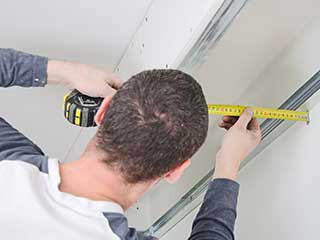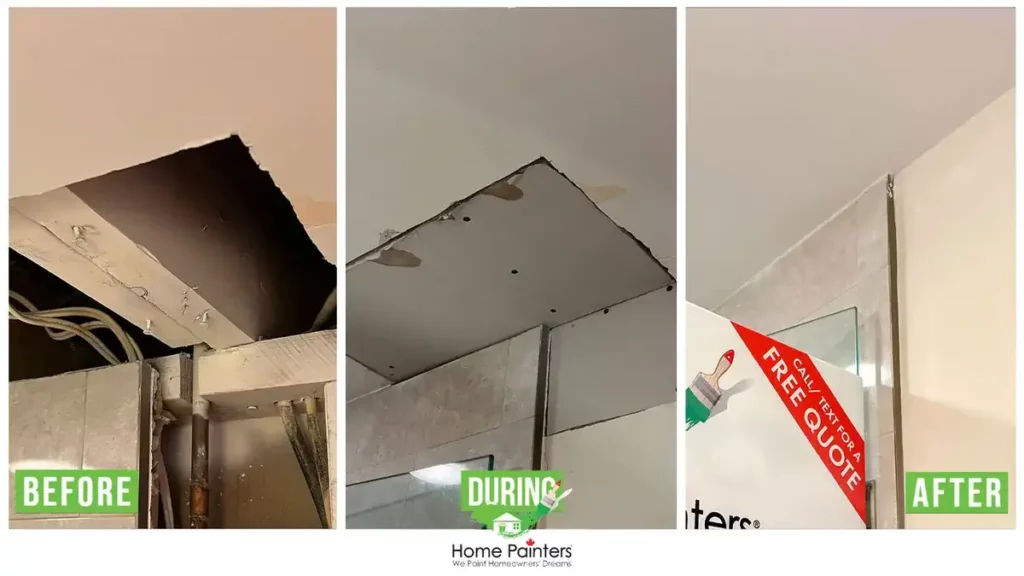A Comprehensive Overview to Mastering Drywall Repair Service and Installation
This guide offers a detailed expedition of drywall repair work and installation, dealing with both amateurs and skilled professionals. It details essential tools, strategies for patching and hanging sheets, and the vital completing procedures. Interior Painting. By comprehending typical pitfalls, people can accomplish polished results. Understanding these skills not only enhances one's home but additionally develops confidence in do it yourself endeavors. What fundamental ideas will assure a successful job from beginning to end?
Necessary Tools for Drywall Repair and Installation
When beginning on drywall repair work and installation, a couple of important tools can substantially improve the performance and top quality of the job. A drywall knife, usually readily available in different dimensions, is essential for applying joint substance and smoothing joints. A taping blade is additionally needed for feathering sides and making sure a seamless coating. Furthermore, a drywall saw or utility blade permits exact cutting of drywall sheets to fit any type of room.

Step-by-Step Overview to Patching Holes
Patching holes in drywall is a straightforward procedure that can bring back the wall surface's look and stability. To start, the area around the opening must be cleaned up and any type of loose debris removed. For tiny openings, a straightforward spackle or joint compound can be applied with a putty blade. Bigger openings may need a patch; an item of drywall can be reduced to fit the hole, secured with sticky or screws, and afterwards taped around the sides. Once the spot remains in place, joint compound is used over the patch and feathered out to blend with the bordering wall. After the substance dries, fining sand is essential to accomplish a smooth surface. Lastly, the fixed location can be primed and painted to match the rest of the wall. This approach assures a seamless fixing, improving the overall look of the drywall and maintaining its structural integrity.
Techniques for Hanging Drywall Sheets
After successfully fixing openings in drywall, the next action involves hanging new drywall sheets to create a seamless surface area. To achieve this, one should start by measuring the wall surface area properly and cutting the drywall sheets to fit. It is essential to hang the sheets flat for better structural stability, beginning from the top and working downwards.
Making use of a drywall lift can streamline the process, specifically for ceiling installments. When positioned, securing the sheets with drywall screws at intervals of regarding 12 inches along the sides and 16 inches in the field is vital. This assures a strong hold and reduces the risk of drooping. For edges, the sheets must be reduced to fit well, enabling cleaner joints. It is a good idea to stagger the joints between sheets to strengthen the general structure, producing a more sturdy surface prepared for the following phase in the drywall installation process.
Completing Touches: Insulation and Mudding
Finishing the drywall setup involves the important a knockout post actions of taping and mudding, which ensure a smooth and sleek finish. Insulation calls for the application of joint tape over the joints in between drywall sheets. drywall contractor. This tape can be either paper or fiberglass mesh, with each type offering one-of-a-kind advantages. After taping, the next step is mudding, where joint compound, or "mud," is put on cover the tape and load any blemishes
Using a drywall blade, the substance needs to be spread evenly, making sure a feathery edge to lessen visible adjustments. Several layers are usually essential, with fining sand in between each layer to accomplish a seamless surface. Careful interest throughout this process is crucial, as it greatly impacts the last look of the wall surface. With the best method and persistence, the end result will be a remarkable foundation ready for paint or finishing touches.
Usual Errors to Avoid in Drywall Projects

An additional common blunder is not allowing sufficient drying time in between coats, which can catch moisture and jeopardize the surface. Overlooking to feather the sides properly can produce noticeable lines and imperfections. Avoiding sanding or making use of improper methods might leave harsh places. By understanding these pitfalls, people can considerably enhance the high quality of their drywall jobs and accomplish a professional-looking surface.
Regularly Asked Questions
Can I Fix Drywall Without Specialist Aid?
Yes, one can fix drywall without professional aid. With the right tools, materials, and guidance, individuals can efficiently handle minor repair work. However, substantial damages may need professional expertise read review for perfect outcomes and durability.
For How Long Does Drywall Substance Require To Dry?
Drywall substance normally takes in between 24 to 2 days to dry entirely, depending upon elements such as moisture and temperature level. Thinner layers might dry quicker, while thicker applications need more time for excellent outcomes.
What's the most effective Kind Of Paint for Drywall?
The most effective kind of paint for drywall is normally a water-based latex paint. It offers outstanding protection, resilience, and ease of application, making it optimal for interior wall surfaces while enabling easy cleanup with soap and water.

How Do I Prevent Mold And Mildew on Drywall?
To stop mold and mildew on drywall, guarantee appropriate air flow, control moisture levels, utilize mold-resistant products, and quickly resolve any type of leaks. Regular inspections and instant remediation of water damages are additionally important for lasting prevention.
Is Drywall Recyclable After Elimination?
Drywall is recyclable after published here elimination, gave it is without pollutants like mold, paint, or other hazardous materials. Reusing centers can process it into new products, promoting sustainability and decreasing land fill waste in building and construction.
When starting on drywall repair work and installment, a few necessary tools can greatly boost the effectiveness and top quality of the job. After successfully repairing holes in drywall, the next step includes hanging new drywall sheets to develop a smooth surface. Completing the drywall installment entails the crucial actions of taping and mudding, which guarantee a polished and smooth surface. Attaining a refined finish in drywall projects can be tough, and a number of common errors can threaten the quality of the work. Yes, one can fix drywall without specialist assistance.